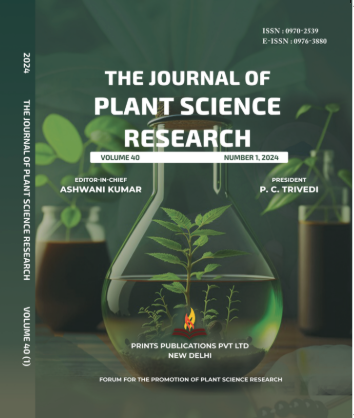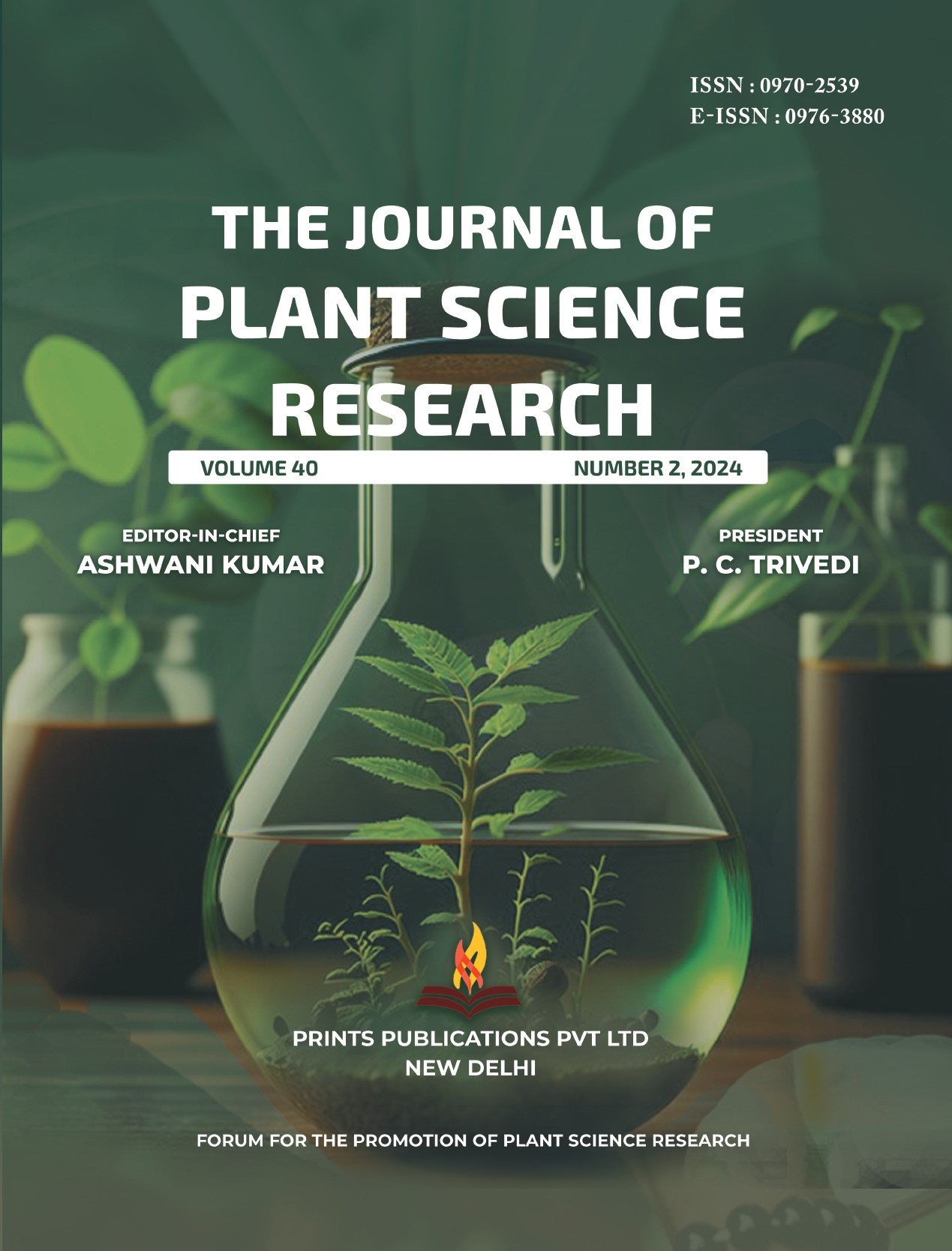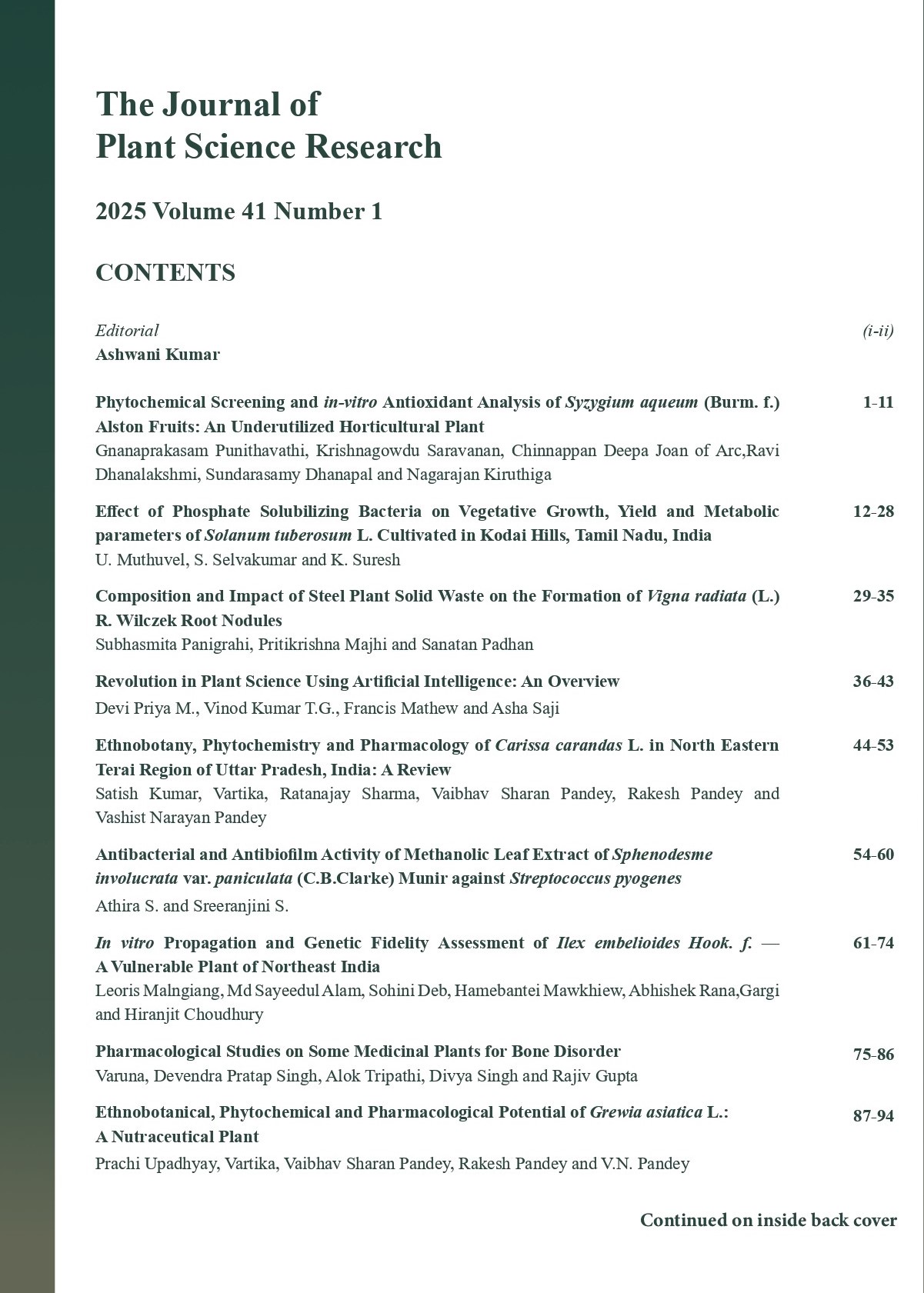The Journal of Plant Science Research - A UGC Care-Listed Journal
Published in Association with Forum For the Promotion of Plant Science Research
Current Volume: 41 (2025 )
ISSN: 0970-2539
e-ISSN: 0976-3880
Periodicity: Tri-annual
Month(s) of Publication: April, August & December
Subject: Botany
DOI: 10.32381/JPSR
Online Access is Free for Life Member
Response of Indian Cultivar of Isabgol on Halopriming under the Saline Condition
By : Sandhya R. Verma, Hitesh Kumar Solanki
Page No: 525-531
Abstract:
Soil salinity is one of the major abiotic stresses that strongly affect seed germination in agriculture. In order to fulfill the need of demand in agriculture, seed priming is one of the promising techniques that enhance seed germination and uniformity. Isabgol, one of India’s important medicinal crops, has a low germination rate. In Gujarat state, Isabgol has considered a cash crop, serving as a source of income to the farmers. Gujarat state faces many challenges, and seawater ingress is one of the major issues creating salinity in the soil, affecting seed germination. This research was carried out to study the effects of seed priming on seed germination behavior of Gujarat Isabgol variety 4. The method where KNO3 was used for priming with two different salinity levels, 0 dS/m, and 5.3 dS/m. The experiment was a completely randomized design. In this experiment, germination traits like germination percentage, Mean Germination Time, plumule length, radicle length, seed vigour, and fresh weight were measured. Data were analyzed by using SPSS software. The present study shows that halopriming with KNO3 at a lower concentration was quite an effective treatment since it significantly increased some of the germination traits of Gujarat Isabgol variety 4.
Authors :
Sandhya R Verma : Ph.D. Scholar, Department of Botany, Bio-informatics, Climate Change Impacts Management, USSC, Gujarat University, Ahmedabad, Gujarat, India.
Hitesh Kumar Solanki :Professor, Department of Botany, Bio-informatics, Climate Change Impacts Management, USSC, Gujarat University, Ahmedabad, Gujarat, India.
DOI: https://doi.org/10.32381/JPSR.2022.38.02.9






